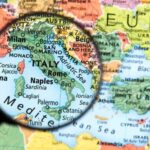Italy has long been revered as a premier travel destination, captivating visitors with its rich history, stunning landscapes, and vibrant culture. However, the COVID-19 pandemic unleashed unprecedented challenges on the global tourism industry, prompting countries worldwide to implement travel restrictions to mitigate the spread of the virus. In this blog post, we will delve into recent and noteworthy changes to Italy’s travel restrictions, shedding light on how these regulations have shaped the country’s current landscape for travelers.
Before we explore the specific modifications to Italy’s travel restrictions in detail, let us take a moment to reflect on Italy’s pre-pandemic allure. From iconic landmarks such as the Colosseum and the Vatican City to picturesque coastal towns along the Amalfi Coast and the romantic canals of Venice, Italy has always captivated tourists seeking both cultural enrichment and breathtaking natural beauty.
However, with the advent of COVID-19, Italy faced unprecedented challenges that significantly impacted its tourism industry. The implementation of initial travel restrictions during the pandemic had profound implications for travelers longing to experience Italy’s wonders firsthand. These measures were put in place to safeguard public health but inevitably had far-reaching consequences for international and domestic travel.
In light of this context, it is crucial to delve into Italy’s comprehensive phased reopening strategy and understand how it has contributed to gradual relaxation of travel restrictions. By examining the specific stages and milestones associated with this approach, we gain insights into the evolving landscape that awaits prospective travelers eager to visit this enchanting country once again.
The Pre-Pandemic Landscape
Before the COVID-19 pandemic brought travel to a sudden halt, Italy was a dream destination for millions of tourists from around the world. With its rich history, vibrant culture, stunning landscapes, and renowned cuisine, Italy offered an unparalleled experience for travelers.
The country’s pre-pandemic travel regulations were generally straightforward, allowing visitors from many countries to enter with just a valid passport. However, as the pandemic took hold, these regulations had to undergo significant changes to protect public health and safety.
In the pre-pandemic landscape, Italy welcomed tourists with open arms. Visitors flocked to iconic cities like Rome, Florence, and Venice to marvel at historical landmarks such as the Colosseum, the Uffizi Gallery, and St. Mark’s Square.
The country’s breathtaking countryside regions like Tuscany and the Amalfi Coast also attracted travelers seeking picturesque landscapes and vineyard tours. Whether it was exploring ancient ruins in Pompeii or indulging in authentic Italian gelato on the streets of Naples, Italy offered a diverse range of experiences that catered to all types of travelers.
However, with the onset of COVID-19 in early 2020, Italy faced an unprecedented challenge. As one of Europe’s hardest-hit countries by the virus, it was forced to implement strict travel restrictions to curb its spread.
These restrictions included a ban on non-essential travel from other countries and mandatory quarantine measures for arriving passengers. The sudden drop in tourism not only had a profound impact on Italy’s economy but also left countless businesses that relied on tourism struggling to survive.
Nevertheless, as vaccination rates increased and infection rates decreased over time, Italy began implementing a phased reopening strategy. The government recognized the importance of gradually easing travel restrictions while maintaining public health precautions. This approach aimed to strike a balance between reviving international tourism and ensuring safety for both visitors and residents.
Overall, reflecting on Italy’s pre-pandemic landscape allows us to appreciate the charm and appeal that makes Italy one of the world’s most desired travel destinations. However, it also serves as a reminder of the challenges faced by the country in adapting its regulations to protect public health during these unprecedented times. The next section will delve into how Italy responded to these challenges with a comprehensive phased reopening strategy.
The Effects of COVID-19 on Italy
Italy, known for its rich history, cultural treasures, and picturesque landscapes, suffered greatly due to the impact of the COVID-19 pandemic. As the virus spread across the country in early 2020, Italy quickly became one of the worst-hit nations in Europe. The effects of COVID-19 on Italy were not only devastating for public health but also had a profound impact on its tourism industry.
Examining how the pandemic disrupted Italy’s tourism industry:
The pandemic brought about an unprecedented disruption to Italy’s tourism industry, which is an essential component of the country’s economy. With travel restrictions and lockdown measures implemented to control the spread of the virus, tourist hotspots such as Rome, Florence, and Venice became eerily quiet. The closure of popular attractions, hotels, restaurants, and bars left tourists stranded and local businesses struggling to survive.
As flights were canceled and borders closed worldwide, Italy experienced a significant decline in international visitors. This hit especially hard during peak travel seasons like spring and summer when millions of tourists typically flock to famous landmarks and beaches throughout the country. International arrivals dropped by more than two-thirds compared to previous years. With travel essentially at a standstill, many businesses that relied heavily on tourism faced financial difficulties or even permanent closure.
Discussing the implementation of initial travel restrictions:
To mitigate the spread of COVID-19 within its borders, Italy swiftly implemented strict travel restrictions. In March 2020, a nationwide lockdown was imposed that limited movement within regions and eventually halted all non-essential travel across the country. These measures had a profound effect not only on domestic travelers but also on international tourists who were caught off guard by abrupt border closures.
Travelers from affected countries were either unable to enter Italy or faced mandatory quarantine upon arrival. Flights were grounded or drastically reduced in frequency as airlines struggled with low demand and constantly changing regulations. This uncertainty created confusion for those planning trips to Italy and disrupted the itineraries of travelers already in the country.
The effects of the COVID-19 pandemic on Italy’s tourism industry were undeniable. However, as the situation gradually improved, Italy began laying the groundwork for a phased reopening strategy to revive its travel sector and welcome visitors once again.
The Phased Reopening Strategy
Italy’s phased reopening strategy has been a crucial aspect of the country’s response to the COVID-19 pandemic. This comprehensive approach has allowed Italy to gradually and cautiously ease travel restrictions while prioritizing public health and safety. By implementing specific stages and milestones, Italy has been able to monitor the epidemiological situation and adjust its measures accordingly.
The phased reopening strategy in Italy can be summarized in several key stages:
- Phase 1: Lockdown Measures – During this initial phase, strict lockdown measures were implemented to curb the spread of the virus. Non-essential travel was restricted, and strict stay-at-home orders were put in place.
- Phase 2: Gradual Reopening – As the situation improved, Italy proceeded to gradually reopen various sectors of society, including tourism. Travel restrictions within regions were eased, allowing Italians to move more freely within their own country.
- Phase 3: International Travel Resumes – In this phase, Italy reopened its borders for international travelers with certain conditions in place. Initially, travel was limited to essential reasons only, such as work or medical emergencies.
- Phase 4: Easing Restrictions Further – As vaccination efforts progressed and COVID-19 cases declined, Italy entered a phase of further relaxation of travel restrictions. Quarantine requirements for fully vaccinated individuals were lifted for certain countries, allowing for easier international travel.
Throughout these phases, Italy closely monitored the situation and adjusted its measures based on evolving circumstances. It is essential for travelers to stay informed about any updates or changes to travel restrictions as they plan their trip to Italy.
To facilitate a smooth travel experience during the phased reopening strategy, it is important for travelers to take note of the following tips:
- Check official government websites and reputable sources regularly for updates on current travel restrictions.
- Understand the entry requirements specific to your country of origin or residence.
- Familiarize yourself with any testing or quarantine protocols that may be in place.
- Ensure you have travel insurance that covers COVID-19-related expenses.
- Follow all health and safety guidelines, such as wearing masks, practicing social distancing, and frequently washing hands.
By staying informed and adhering to necessary health and safety measures, travelers can navigate Italy’s phased reopening strategy with confidence and enjoy the unique experiences this beautiful country has to offer.
Recent Changes in Italy Travel Restrictions
Italy has undergone significant changes in its travel restrictions in response to the COVID-19 pandemic. Understanding these recent modifications is crucial for any traveler planning a trip to Italy. This section will analyze the most significant changes to Italy’s travel restrictions and discuss their impact on international and domestic travel.
- Quarantine Requirements: Italy has revised its quarantine requirements based on the risk level of the traveler’s country of origin. Currently, travelers coming from EU countries, Schengen Area countries, the United Kingdom, and Israel do not need to quarantine upon arrival in Italy. However, travelers arriving from other countries are subject to a mandatory 5-day quarantine, followed by a negative PCR or antigen test result at the end of the isolation period.
- Testing Protocols: COVID-19 testing is an essential aspect of traveling to Italy. All individuals entering Italy must present a negative PCR or antigen test taken within 48 hours before arrival. Vaccinated travelers from the EU, Schengen Area countries, the United Kingdom, and Israel are exempt from this requirement unless they have stayed in a high-risk country within 14 days before their arrival.
- Visa Regulations: Italy has made adjustments to its visa regulations during the pandemic. Travelers who had their visas expired during the national emergency period can request an extension until December 31st, Additionally, individuals who entered as tourists but were unable to leave due to travel restrictions can stay legally until October 31st, 2021.
It is important for travelers planning a trip to Italy to familiarize themselves with these recent changes in order to ensure compliance with current regulations and prevent any disruptions or challenges during their visit.
Sources:
- Ministero della Salute – https://www.salute.gov.it/
- Viaggiare Sicuri – https://www.viaggiaresicuri.it/
Exploring the Green Pass System
One of the most significant recent changes to Italy’s travel restrictions is the implementation of the Green Pass system. The Green Pass is a digital certificate that provides proof of vaccination, a negative COVID-19 test result, or recovery from the virus. This system was introduced as a way to facilitate safer travel and ease restrictions within Italy.
The Green Pass is available to both Italian residents and non-residents who meet the eligibility criteria. To obtain a Green Pass, individuals must provide evidence of being fully vaccinated with an approved vaccine, present a negative COVID-19 test result taken within a specified time frame, or show documentation of recent recovery from COVID-19. Once obtained, the Green Pass can be accessed digitally or in print form and allows travelers to access various venues and activities within Italy.
With the Green Pass, travelers are able to enter certain venues and participate in events that may have been restricted without it. These include museums, cinemas, theaters, stadiums for sporting events, conferences, fairs, theme parks, swimming pools, gyms, and indoor dining at restaurants. The introduction of the Green Pass has allowed for more freedom and flexibility in experiencing Italy’s rich cultural offerings while still prioritizing public health.
It is important for travelers planning a trip to Italy to familiarize themselves with the requirements and functionalities of the Green Pass system beforehand. This includes understanding how to obtain a valid Green Pass based on their individual circumstances and ensuring that they have all necessary documentation readily available.
Travelers should also be prepared for potential changes or updates to the system as Italy responds to evolving circumstances or new scientific findings regarding COVID-19. By staying informed and adhering to the necessary health measures outlined by Italian authorities, travelers can enjoy their trip while contributing to ongoing efforts in managing the pandemic effectively.
Traveling to Italy Post-Changes
Italy has implemented various changes to its travel restrictions in response to the COVID-19 pandemic. Traveling to Italy post-changes requires careful planning and adherence to new regulations. This section will provide essential tips for prospective travelers who are planning a trip to Italy.
Firstly, it is crucial for travelers to stay updated on the latest travel restrictions and guidelines issued by the Italian government. These regulations may change frequently, depending on the prevailing health situation. Before booking your trip, regularly check official sources, such as the website of the Italian Ministry of Foreign Affairs or consult with your travel agent for the most up-to-date information.
Secondly, it is advisable to have comprehensive travel insurance that covers COVID-19-related expenses, including medical treatment and quarantine costs. This will ensure that you are protected financially in case unforeseen circumstances arise during your trip.
Additionally, be prepared to comply with health protocols and safety measures implemented in Italy. This may include wearing face masks in public spaces, practicing social distancing, and undergoing required COVID-19 testing before departure or upon arrival.
In terms of transportation, it is recommended to check any specific requirements or restrictions related to flights or other modes of travel within Italy. Some regions may have specific entry requirements or additional documentation needed before entering their territory.
Moreover, it is beneficial for travelers to familiarize themselves with the concept and functionalities of Italy’s Green Pass system. The Green Pass is a digital certificate that provides proof of vaccination against COVID-19, recovery from the virus, or a recent negative test result. This pass may be required for access to certain venues or activities within Italy.
By following these essential tips and staying informed about Italy’s travel restrictions and health guidelines, prospective travelers can ensure a smooth and enjoyable experience while exploring all that Italy has to offer. It is important to remember that flexibility and adaptability are key during these uncertain times as travel regulations can change rapidly based on evolving global circumstances.
| Essential Tips for Traveling to Italy Post-Changes |
|---|
| Stay updated on the latest travel restrictions and guidelines issued by the Italian government. |
| Obtain comprehensive travel insurance that covers COVID-19-related expenses. |
| Comply with health protocols and safety measures implemented in Italy, such as wearing face masks and practicing social distancing. |
| Familiarize yourself with the concept and functionalities of Italy’s Green Pass system. |
Future Prospects and Considerations
As Italy continues to navigate the ever-changing landscape of travel restrictions, it is important for prospective travelers to stay informed and adaptable. The COVID-19 pandemic has shown how quickly regulations can change in response to a dynamic global situation. Therefore, it is crucial for travelers to consider future prospects and potential changes to Italy’s travel restrictions.
One key consideration for future travelers is the possibility of new variants of the virus emerging. As new strains of COVID-19 are discovered, countries around the world may respond by implementing stricter travel restrictions or requiring additional testing and quarantine measures. Travelers should be prepared for the possibility of these changes and stay updated on any new developments before making their travel plans.
Another important factor to consider is vaccination requirements. While Italy’s Green Pass system currently allows vaccinated individuals more freedom in terms of travel and access to venues, it is possible that future restrictions may require proof of vaccination or negative test results even for fully vaccinated individuals. Travelers should consult official sources and healthcare professionals to understand the latest requirements before embarking on their trip.
Furthermore, it is essential to keep an eye on Italy’s overall COVID-19 situation. If there is an increase in cases or if certain regions experience a surge in infections, local authorities may impose stricter measures such as lockdowns or limitations on non-essential activities. Travelers should monitor the situation closely, both in Italy and their home country, to make informed decisions about traveling during uncertain times.
| Future Prospects and Considerations |
|---|
| – Possibility of new variants of the virus emerging |
| – Vaccination requirements and potential changes |
| – Monitoring Italy’s overall COVID-19 situation |
Conclusion
In conclusion, the changes to Italy travel restrictions have had a significant impact on the country’s tourism industry. From the pre-pandemic landscape to the phased reopening strategy, Italy has adapted its regulations to prioritize health and safety while still allowing travelers to experience the allure of this popular destination. The recent modifications to travel restrictions have been crucial in navigating the challenges posed by COVID-19 and ensuring a smooth travel experience for both international and domestic visitors.
One of the most noteworthy changes is the implementation of the Green Pass system. This digital certificate has become an essential part of travel arrangements and provides access to various venues within Italy. Travelers must familiarize themselves with this system and ensure they comply with its requirements to avoid any disruption during their trip.
As prospective travelers plan their visit to Italy, it is vital for them to stay informed about the latest updates regarding travel restrictions. The evolving global situation might prompt further adjustments in policies, making adaptability an essential trait for anyone planning a trip. By staying updated and adhering to necessary health and safety measures, travelers can embrace the excitement of exploring Italy while protecting themselves and others around them.

I’m a passionate traveler, writer, and Italophile. My fascination with Italy’s history, art, and culture has led me on countless adventures across the Italian landscape. Through “I Live Italy,” I share my love for this extraordinary country and aims to inspire others to explore its boundless beauty.





